Categoría "Física"
Se han encontrado 12 Coincidencias
Historia del Tiempo
191 Visitas | 227 Descargas | 2013-11-01 06:15:59 | moliver
HISTORIA DEL TIEMPO es un libro de divulgación sobre el espacio y el tiempo escrito por uno de los físicos teóricos más prestigiosos de la actualidad.
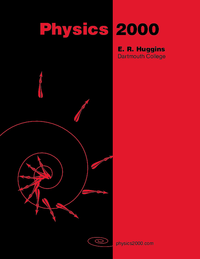
Ch 2 Vectors cr
Ch 2 Vectors cr
80 Visitas | 72 Descargas | 2015-12-07 19:15:10 | raulito
Physics2000 is a calculus based, college level introductory physics course that is designed to include twentieth century physics throughout. This is made possible by introducing Einstein’s special theory of relativity in the first chapter. This way, students start off with a modern picture of how space and time behave, and are prepared to approach topics such as mass and energy from a modern point of view.
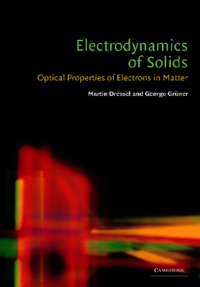
ELECTRODYNAMICS OF SOLIDS. OPTICAL PROPERTIES OF ELECTRONS IN MATTER
88 Visitas | 92 Descargas | 2015-12-07 19:29:39 | raulito
This book has its origins in a set of lecture notes, assembled at UCLA for a graduate course on the optical studies of solids. In preparing the course it soon became apparent that a modern, up to date summary of the field is not available. More than a quarter of a century has elapsed since the book by Wooten: Optical Properties of Solids – and also several monographs – appeared in print. The progress in optical studies of materials, in methodology, experiments and theory has been substantial, and optical studies (often in combination with other methods) have made definite contributions to and their marks in several areas of solid state physics. There appeared to be a clear need for a summary of the state of affairs – even if with a somewhat limited scope
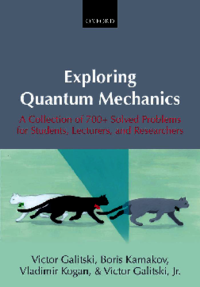
Exploring Quantum Mechanics
Exploring Quantum Mechanics
40 Visitas | 38 Descargas | 2021-07-11 06:26:23 | renrique
The book you are now reading contains arguably the world’s largest collection of problems in quantum physics, which span just about the full scope of subjects in quantum theory ranging from elementary single-particle quantum mechanics in one dimension to relativistic field theory and advanced aspects of nuclear physics. There are more than 700 problems of various difficulty, accompanied by detailed solutions. While some problems are elementary and may be accessible to advanced undergraduate students, some are at the research level that would be of challenge and interest to a practicing theoretical physicist. Consequently, the book will be useful to a wide range of readers including both students studying quantum mechanics and professors teaching it. In fact, this problem book has a proven record of being a scientific bestseller in other countries, notably in Russia, where its earlier versions have been used for over thirty years as a standard text to learn and teach quantum physics at all leading universities.
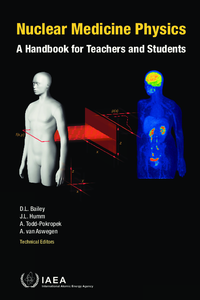
Nuclear Medicine Physics: A Handbook for Teachers and Students
Nuclear Medicine Physics: A Handbook for Teachers and Students
43 Visitas | 36 Descargas | 2021-07-11 06:36:22 | renrique
Nuclear medicine is the use of radionuclides in medicine for diagnosis, staging of disease, therapy and monitoring the response of a disease process. It is also a powerful translational tool in the basic sciences, such as biology, in drug discovery and in pre-clinical medicine. Developments in nuclear medicine are driven by advances in this multidisciplinary science that includes physics, chemistry, computing, mathematics, pharmacology and biology. This handbook comprehensively covers the physics of nuclear medicine. It is intended for undergraduate and postgraduate students of medical physics. It will also serve as a resource for interested readers from other disciplines, for example, clinicians, radiochemists and medical technologists who would like to familiarize themselves with the basic concepts and practice of nuclear medicine physics
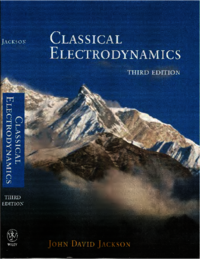
Classical Electrodynamics
Classical Electrodynamics
64 Visitas | 35 Descargas | 2021-07-11 06:43:53 | renrique
It has been 36 years since the appearance of the first edition of this book, and 23 years since the second. Such intervals may be appropriate for a subject whose fundamental basis was completely established theoretically 134 years ago by Maxwell and experimentally 110 years ago by Hertz. Still, there are changes in emphasis and applications. This third edition attempts to address both without any significant increase in size. Inevitably, some topics present in the second edition had to be eliminated to make room for new material. One major omission is the chapter on plasma physics, although some pieces appear elsewhere. Read— ers who miss particular topics may, I hope, be able to avail themselves of the second edition.
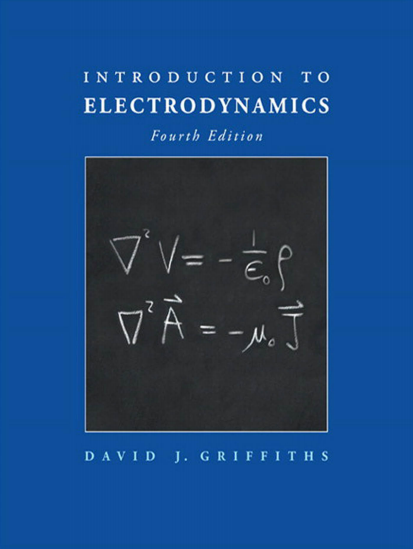
INTRODUCTION TO ELECTRODYNAMICS
INTRODUCTION TO ELECTRODYNAMICS
53 Visitas | 33 Descargas | 2021-07-11 06:48:34 | renrique
This is a textbook on electricity and magnetism, designed for an undergraduate course at the junior or senior level. It can be covered comfortably in two semesters, maybe even with room to spare for special topics (AC circuits, numerical methods, plasma physics, transmission lines, antenna theory, etc.) A one-semester course could reasonably stop after Chapter 7. Unlike quantum mechanics or thermal physics (for example), there is a fairly general consensus with respect to the teaching of electrodynamics; the subjects to be included, and even their order of presentation, are not particularly controversial, and textbooks differ mainly in style and tone. My approach is perhaps less formal than most; I think this makes difficult ideas more interesting and accessible
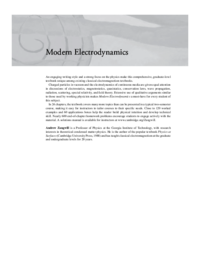
Modern Electrodynamics
Modern Electrodynamics
42 Visitas | 33 Descargas | 2021-07-11 06:54:46 | renrique
In his Lectures on Physics, Richard Feynman asserts that “ten thousand years from now, there can be little doubt that the most significant event of the 19th century will be judged as Maxwell’s discovery of the laws of electrodynamics”. Whether this prediction is borne out or not, it is impossible to deny the significance of Maxwell’s achievement to the history, practice, and future of physics. That is why electrodynamics has a permanent place in the physics curriculum, along with classical mechanics, quantum mechanics, and statistical mechanics. Of these four, students often find electrodynamics the most challenging. One reason is surely the mathematical demands of vector calculus and partial differential equations. Another stumbling block is the non-algorithmic nature of electromagnetic problem-solving. There are many entry points to a typical electromagnetism problem, but it is rarely obvious which lead to a quick solution and which lead to frustrating complications. Finally, Freeman Dyson points to the “two-level” structure of the theory.1 A first layer of linear equations relates the electric and magnetic fields to their sources and to each other. A second layer of equations for force, energy, and stress are quadratic in the fields. Our senses and measurements probe the second-layer quantities, which are determined only indirectly by the fundamental first-layer quantities.
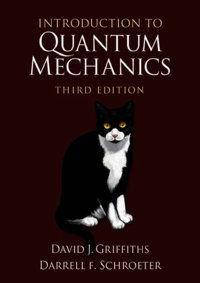
INTRODUCTION TO QUANTUM MECHANICS
INTRODUCTION TO QUANTUM MECHANICS
51 Visitas | 39 Descargas | 2021-07-11 07:04:41 | renrique
Unlike Newton’s mechanics, or Maxwell’s electrodynamics, or Einstein’s relativity, quantum theory was not created—or even definitively packaged—by one individual, and it retains to this day some of the scars of its exhilarating but traumatic youth. There is no general consensus as to what its fundamental principles are, how it should be taught, or what it really “means.” Every competent physicist can “do” quantum mechanics, but the stories we tell ourselves about what we are doing are as various as the tales of Scheherazade, and almost as implausible. Niels Bohr said, “If you are not confused by quantum physics then you haven’t really understood it”; Richard Feynman remarked, “I think I can safely say that nobody understands quantum mechanics.”
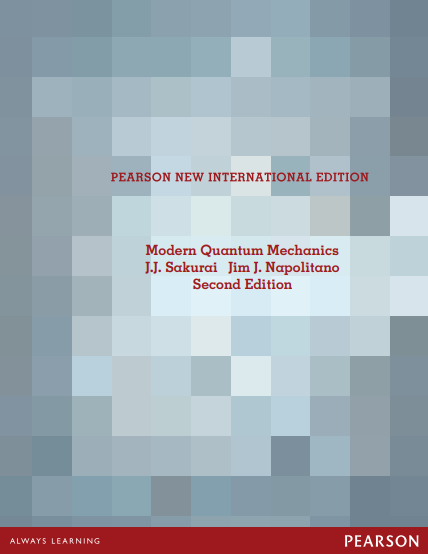
Modern Quantum Mechanics
Modern Quantum Mechanics
45 Visitas | 37 Descargas | 2021-07-11 07:09:35 | renrique
The revolutionary change in our understanding of microscopic phenomena that took place during the first 27 years of the twentieth century is unprecedented in the history of natural sciences. Not only did we witness severe limitations in the validity of classical physics, but we found the alternative theory that replaced the classical physical theories to be far broader in scope and far richer in its range of applicability.
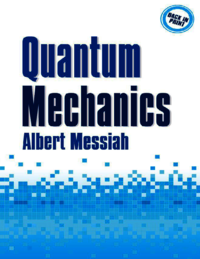
QUANTUM MECHANICS
QUANTUM MECHANICS
50 Visitas | 39 Descargas | 2021-07-11 07:19:44 | renrique
Nowadays, there hardly exists a branch of physics which one can seriously approach without a thorough knowledge of Quantum Mechanics. Its presentation, which is given in this work is, I hope, simple enough to be accessible to the student, and yet sufficiently complete to serve as a reference book for the working physicist. This book resulted from a course given at the Center of Nuclear Studies at Saclay since 1953. Numerous discussions with students as well as with my colleagues, have helped me considerably in clarifying its presentation. Several people to whom I had transmitted certain parts of the manuscript, have kindly given me their criticism; among them I should like to mention Messrs. Edmond Bauer and Jean Ullmo, to whom I am indebted for interesting remarks concerning the presentation of principles. I am more particularly grateful to Mr. Roger Balian for having critically examined a large portion of the manuscript, and for having suggested to me a large number of improvements. Finally, I wish to thank those of my students who were kind enough to check over the text and the calculations of the various chapters, and to help me with the correction of the proofs
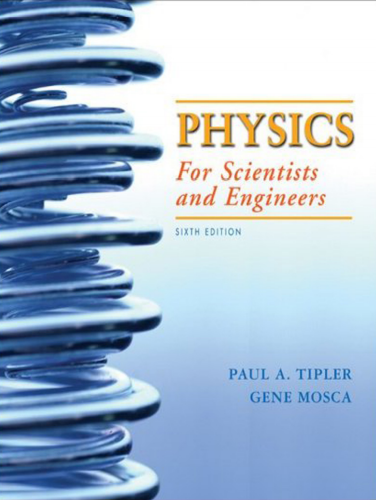
PHYSICS FOR SCIENTISTS AND ENGINEERS
PHYSICS FOR SCIENTISTS AND ENGINEERS WITH MODERN PHYSICS
82 Visitas | 55 Descargas | 2021-07-11 07:32:26 | renrique
The sixth edition of Physics for Scientists and Engineers offers a completely integrated text and media solution that will help students learn most effectively and will enable professors to customize their classrooms so that they teach most efficiently. The text includes a new strategic problem-solving approach, an integrated Math Tutorial, and new tools to improve conceptual understanding. New Physics Spotlights feature cutting-edge topics that help students relate what they are learning to real-world technologies. The new online learning management system enables professors to easily customize their classes based on their students’ needs and interests by using the new interactive Physics Portal, which includes a complete e-book, student and instructor resources, and a robust online homework system. Interactive Exercises in the Physics Portal give students the opportunity to learn from instant feedback, and give instructors the option to track and grade each step of the process. Because no two physics students or two physics classes are alike, tools to help make each physics experience successful are provided.
Contribuir
Usted puede contribuir con Libros UCLV, es importante para nosotros su aporte..
Contribuir